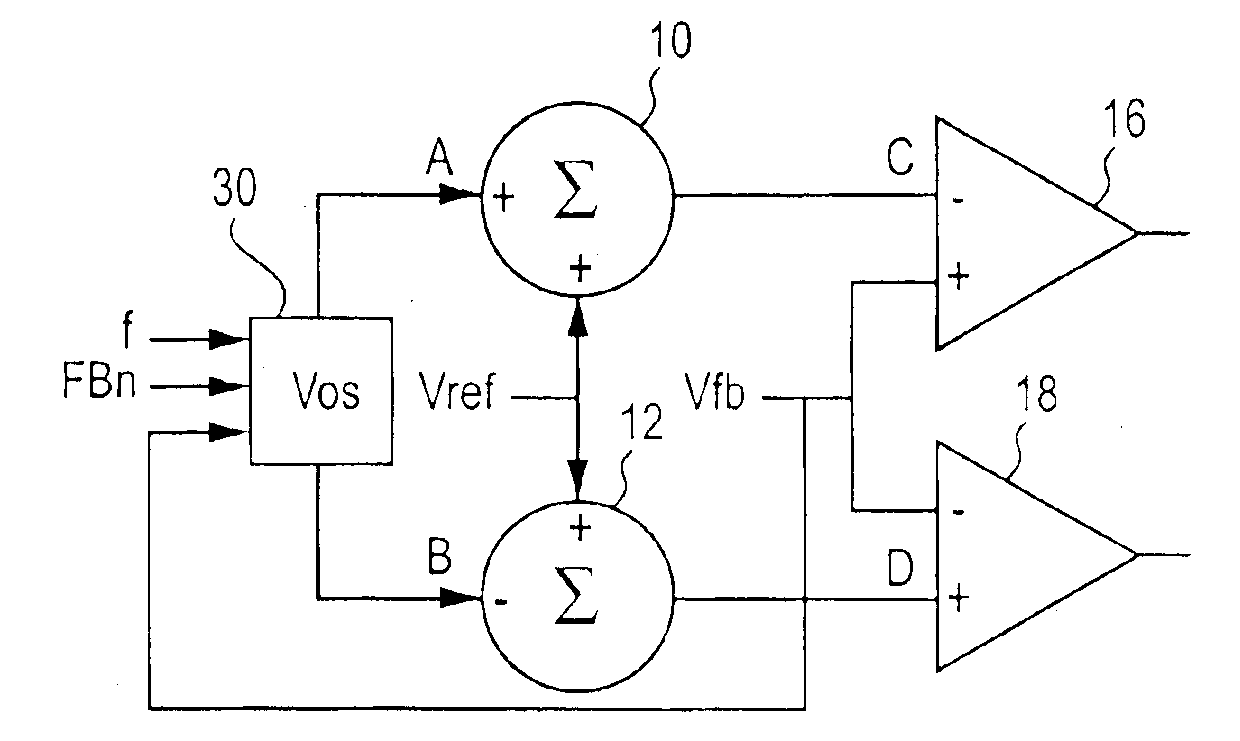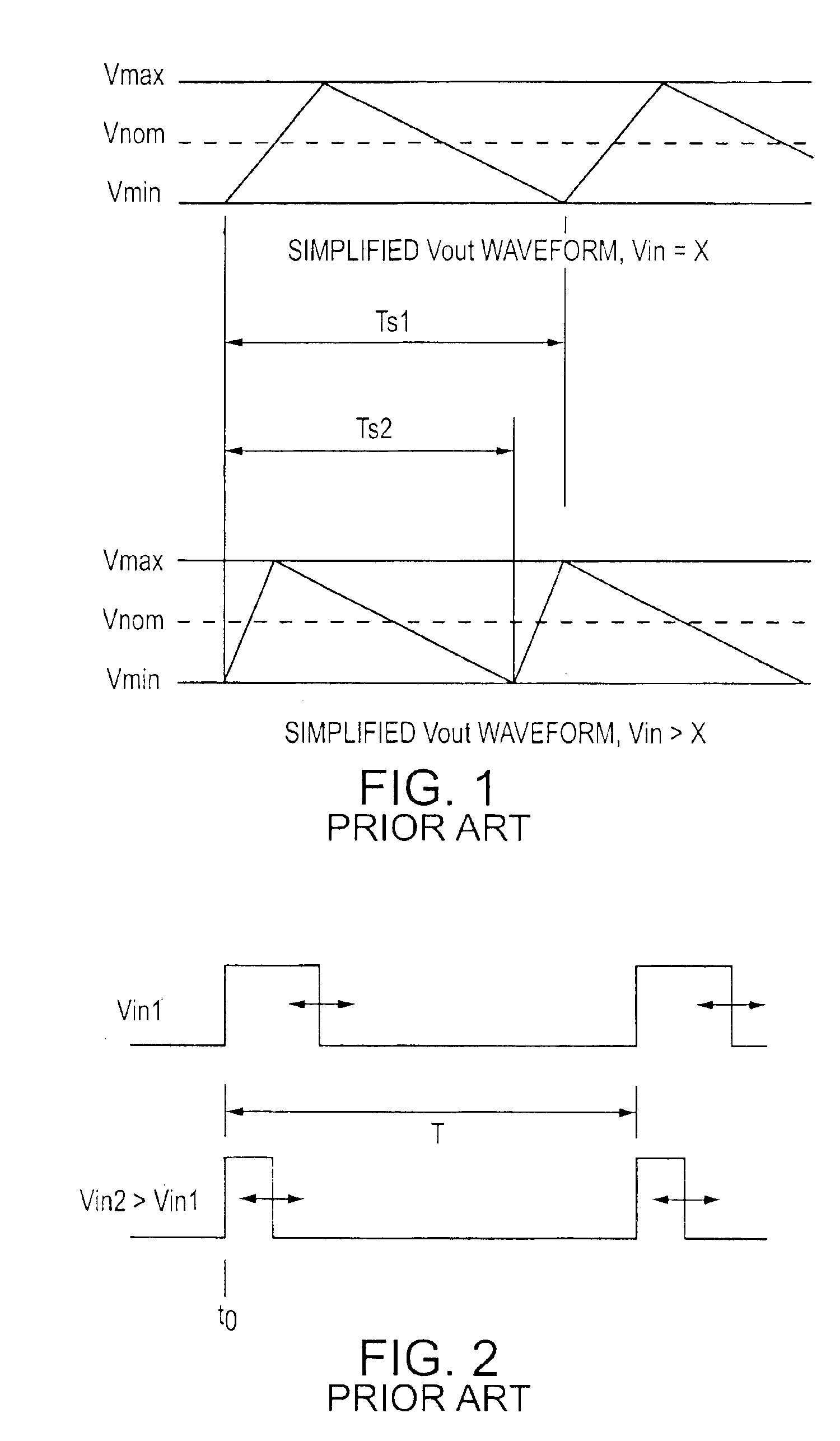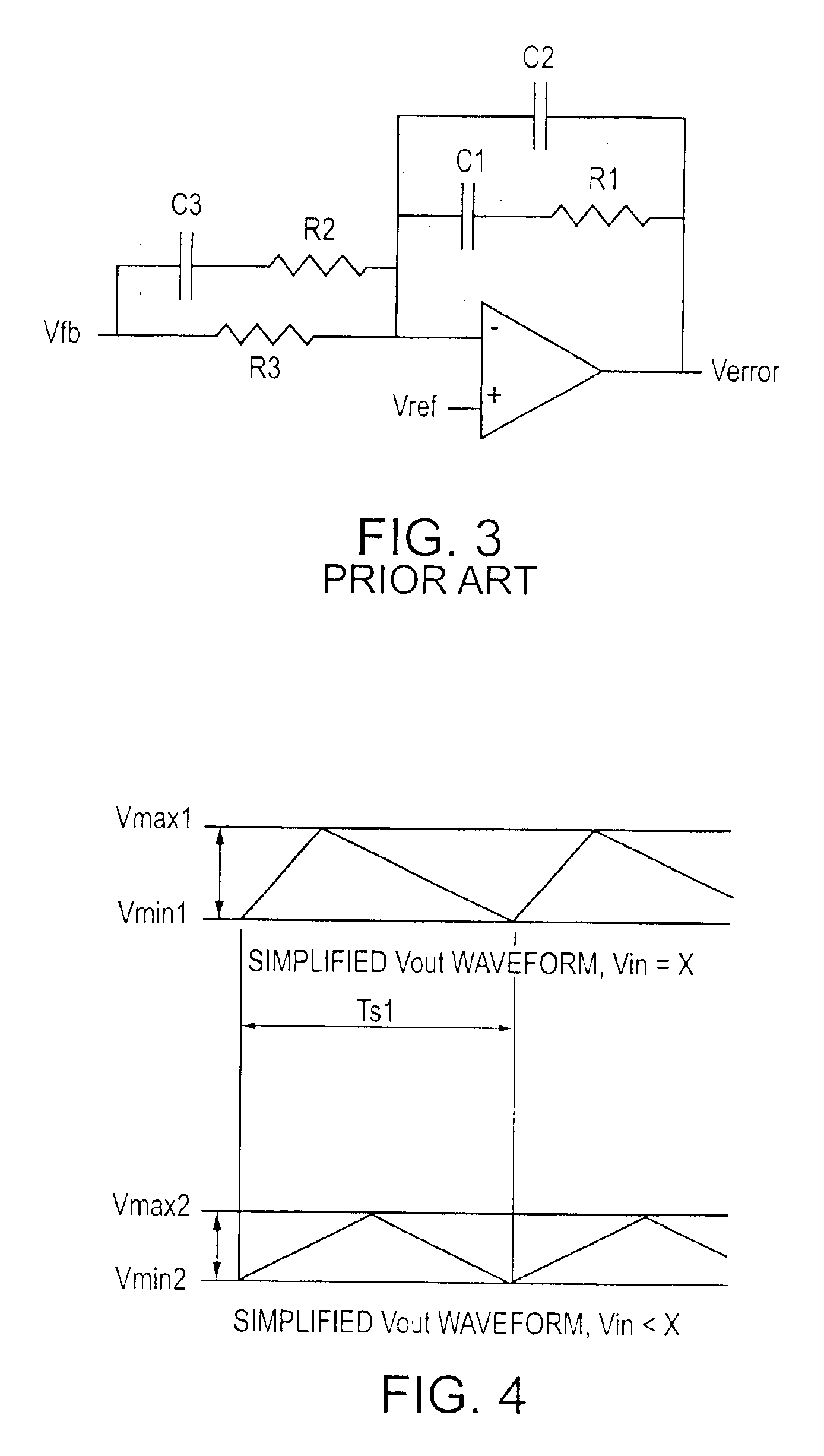Fixed frequency hysteretic regulator
a hysteretic regulator and fixed frequency technology, applied in process control, amplifiers, instruments, etc., can solve problems such as unworkable designs, difficult curing stability problems, and no control scheme retains all the advantages, and achieves fast response and inherent stability
- Summary
- Abstract
- Description
- Claims
- Application Information
AI Technical Summary
Benefits of technology
Problems solved by technology
Method used
Image
Examples
Embodiment Construction
[0032]The characteristics of the FFHR can be accomplished by any number of circuit solutions. According to one aspect of the invention, a hysteretic regulator may have a means of actively varying the window height depending upon circuit conditions. The window will be centered about some portion (depending on the reference voltage of the feedback comparator) of the desired dc output level as in a standard hysteretic regulator. However, instead of the control loop varying the pulse width (horizontal direction, or time base) as in the PWM regulator, the window voltage Vmax−Vmin will be varied (vertical direction, or ripple voltage value). The maximum window variation can be established based on specifications and circuit parameters, including an absolute maximum window voltage specification and a minimum output capacitance ESR. These specifications may be realized in the circuit straightforwardly with a few passive components such as low power resistors. The output falls within certain...
PUM
 Login to View More
Login to View More Abstract
Description
Claims
Application Information
 Login to View More
Login to View More - R&D
- Intellectual Property
- Life Sciences
- Materials
- Tech Scout
- Unparalleled Data Quality
- Higher Quality Content
- 60% Fewer Hallucinations
Browse by: Latest US Patents, China's latest patents, Technical Efficacy Thesaurus, Application Domain, Technology Topic, Popular Technical Reports.
© 2025 PatSnap. All rights reserved.Legal|Privacy policy|Modern Slavery Act Transparency Statement|Sitemap|About US| Contact US: help@patsnap.com



